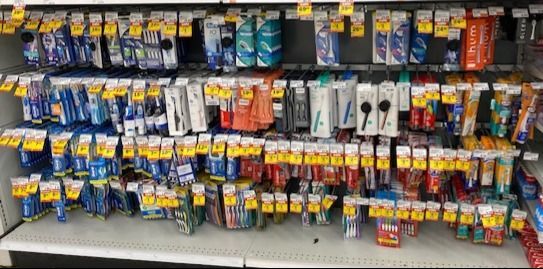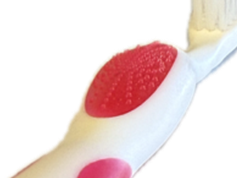A Toothbrush Is a Toothbrush… Or Is It?
Part 1 of a 4-Part Educational Series from Summit Oral Care
Walk into the toothbrush aisle at any major retailer, and you’re instantly met with a wall of options—often 70 or more on display. For patients, this abundance is more confusing than helpful. For dental professionals, however, it’s an opportunity to guide patients to products with real clinical benefits. Choosing the right manual toothbrush isn’t about color or brand loyalty; it’s about functionality, clinical benefit, and patient-specific needs.
Despite most professionals recommending soft bristles and smaller, compact heads, these often aren’t the top sellers in retail. Instead, full-size heads and medium-texture bristles dominate the shelves. Why? One reason is that branded professional-grade brushes often differ from what the brand offers to the retailers, leading to frustration when patients can’t find what their dentist or hygienist recommended. That’s where understanding toothbrush anatomy and design truly matters.

Typical Retailer Toothbrush Aisle
Toothbrush Anatomy: What Dental Professionals Should Know
When evaluating toothbrush design, three features stand out: head size, handle design, additional features and most importantly, the bristles.
Head Size: Bigger Isn’t Better
Smaller heads, such as compact or sub-compact designs, allow better maneuverability—especially in the posterior and near the gumline. Focused brushing in small, controlled areas typically yields better plaque removal than broad, sweeping strokes.


Handle Design: Comfort and Technique Go Hand in Hand
Ergonomic handles with soft elastomer grips improve comfort, encourage proper angulation, and help patients maintain the full two minutes of brushing. Handle designs with angled or rounded thumb grips also help promote correct technique, guiding users naturally into the ideal 45° Bass method of brushing.

Conclusion & Next Steps
Toothbrush anatomy matters. From head size to handle design, each feature influences how effectively patients can remove plaque and protect their oral health. In Part 2, we’ll examine bristles—the true engine of every toothbrush—and the clinical evidence behind different filament designs.
Coming Soon - Part 2: Toothbrush Bristles
The bristles are the most important part of the toothbrush—they provide all the cleaning action. Understanding how bristles are designed and how they perform allows dental professionals to match the right brush to the patient’s specific oral health needs.
Providing highly effective products to meet your patients' needs.
Order your free Summit Oral Care Sample Kit
About the Author
Russell Kalbfeld is the President of Leedtech Resources Company, the maker of Summit Oral Care® products. With more than 25 years of experience in oral care product development and engineering, he is the inventor of record on more than 20 patents in the field.
He has managed numerous clinical and in-vitro trials for toothbrushes and interdental cleaning products at leading institutions, including:
- Loma Linda University
- University of Nebraska
- SUNY Buffalo
- University of North Carolina at Chapel Hill
- Boston University
- Yankel Research
Previously, he served as Director of New Product Development and Engineering at Sunstar, the makers of GUM® and Butler® brands, and has consulted for many of the industry’s leading oral care brands.









